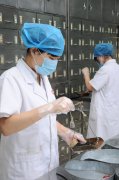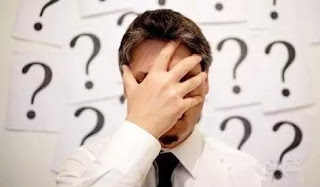Kidney stone
Kidney stone
Pathogen
The formation of kidney stones is a
result of certain factors that cause the concentration of crystalline
substances in urine increased or decreased solubility , was saturated state ,
precipitation and crystallization in the local growth , accumulation and
ultimately the formation of stones . There are many factors that affect the
formation of stones , age , sex , race , genetic , environmental factors ,
eating habits and occupation associated with the formation of stones . The body’s
metabolic abnormalities ( such as hyperparathyroidism , cortisol hyperlipidemia
, hyperglycemia ) , long-term bed rest , nutritional deficiencies ( vitamin B6
deficiency , magnesium deficiency diet ) , urinary tract obstruction infection
, foreign body and the use of drugs is a common cause of stone formation .
Symptoms
The symptoms of kidney stones depends on the size of the
stone , shape , location and with or without infection , obstruction and other
complications . Most patients with kidney stones have no symptoms unless the
kidney stones fall from the kidneys to the ureter causing ureteral obstruction
. Common symptoms are waist and abdomen pain , nausea , vomiting , irritability
, bloating , hematuria and so on . If combined with urinary tract infection ,
may also appear chills and fever and so on . Acute renal colic often pain in
patients with pain .
1. No symptoms
Smooth surface of small stones , can be discharged with the
urine without causing obvious symptoms , fixed in the renal pelvis , the next
calyx and no infection of the stones can also be without any symptoms . Even if
the large antlers , if not caused by calyces , renal pelvis obstruction or
infection , but also long no obvious symptoms , or only mild renal discomfort
or soreness .
2. Pain
(1)Pain or dull pain : mainly due to larger stones in the
renal pelvis or calyx pressure , friction or caused by water caused .
(2)Colic : by smaller stones in the renal pelvis or ureteral
movement , to stimulate the ureter caused by spasm caused . Pain often sudden
attack , began in the back , waist or ribs abdomen , along the ureter down the
abdomen , thigh medial , genital radiation , may be associated with dysuria ,
nausea and vomiting , sweating and so on .
3. Blood in urine
Hematuria often accompanied by pain . Sometimes patients
without pain , only hematuria or blood is very small , the naked eye can not
see . Most of the medical examination included urine examination , and
microscopic examination of urine after centrifugation sedimentation , if you
see too many red blood cells that have hematuria , and sometimes is the early
signs of kidney stones .
4. History of stone
In the pain and hematuria attack , there may be sand or small
stone with urine excretion . Stones though the urethra when there is congestion
and urinary tract tingling sensation , stones immediately after the recovery of
urine immediately after the smooth , patients feel relaxed and comfortable .
5. Infection
symptoms
Combined infection can occur when the pyuria , acute attack
may have chills , fever , low back pain , frequent urination , urgency ,
dysuria symptoms .
6. Renal
insufficiency
Side of the kidney stones caused by obstruction , can cause
the side of the hydronephrosis and progressive renal dysfunction ; bilateral
kidney stones or isolated kidney stones caused by obstruction can be developed
for renal insufficiency .
7. Urinary closure
Bilateral renal stones caused by urinary tract obstruction
on both sides , isolated kidney or the only function of renal calculi
obstruction can occur occlusion , side of the kidney stones obstruction ,
contralateral can occur reflex urinary closure .
8. Waist mass
Stone obstruction caused by severe hydronephrosis , the waist
or upper abdomen palpable mass .
Treatment
1. General
treatment
(1) A lot of drinking water : smaller stones may be subject to a
large number of urine push , rinse and discharge , increased urine also helps
to control infection .
(2) Adjust the diet : diet should be based on the type of stones
and urine PH may be , calcium oxalate stones should avoid high-oxalic acid diet
, limit the intake of spinach , sugar beet , tomato , nuts , cocoa , chocolate
and other food . Low salt diet , control of sodium intake . High uric acid to
eat low purine diet , to avoid eating animal offal , eat less fish and coffee .
(3) Removal of incentives : for pathological factors caused by
urinary tract stones , but also should actively treat the primary disease .
Active treatment of the reasons for the formation of stones to prevent the
formation and recurrence of stones .
2. Symptomatic
treatment
(1) Antispasmodic
pain
(2) Control of
infection : stones caused by urinary tract obstruction prone to infection ,
infection often occurs in the urine magnesium phosphate stones , this vicious
cycle exacerbates the condition . In addition to actively remove the stones to
lift the obstruction , should use antibiotics to control or prevent urinary tract
infection .
(3) Elimination of
hematuria : obvious gross hematuria available hydroxybenzylamine or tranexamic
acid .
3. According to
different ingredients and causes of treatment
(1) High calcium
urine
(2) Renal tubular
acidosis : the main use of alkaline drugs to slow down the growth of stones and
the formation of new stones to correct metabolic disorders .
(3) High oxalic
acid : the treatment of primary high oxalic more difficult , try vitamin B6 ,
starting from a small dose , with the effect of diminishing and continue to
increase , while a large number of drinking water , limited to foods rich in
oxalic acid , urine levels can be reduced to normal .
(4) High uric acid
: low purine food , a large number of drinking water can reduce urinary uric
acid concentration .
(5) High cystine
urine : appropriate restrictions on protein diet , the use of cystine-lowering
thiols to be treated .
(6) Infection stone
: according to the patient to remove the stones , select the appropriate
antibiotic control urinary tract infection .
4. Surgical treatment
Pain can not be drug relief or stone diameter larger , should
consider taking surgical treatment .
5. Emergency
treatment
Renal colic and infection should be treated immediately .
Infection should be timely application of antibiotics , if necessary feasible
renal puncture drainage . Renal colic can be used anticholinergic ,
progesterone , calcium channel blocking drugs . If necessary can be injected
with pethidine analgesic . Bilateral ureteral calculi with obstruction of
patients with anuria can be considered immediately surgery stone .



评论
发表评论